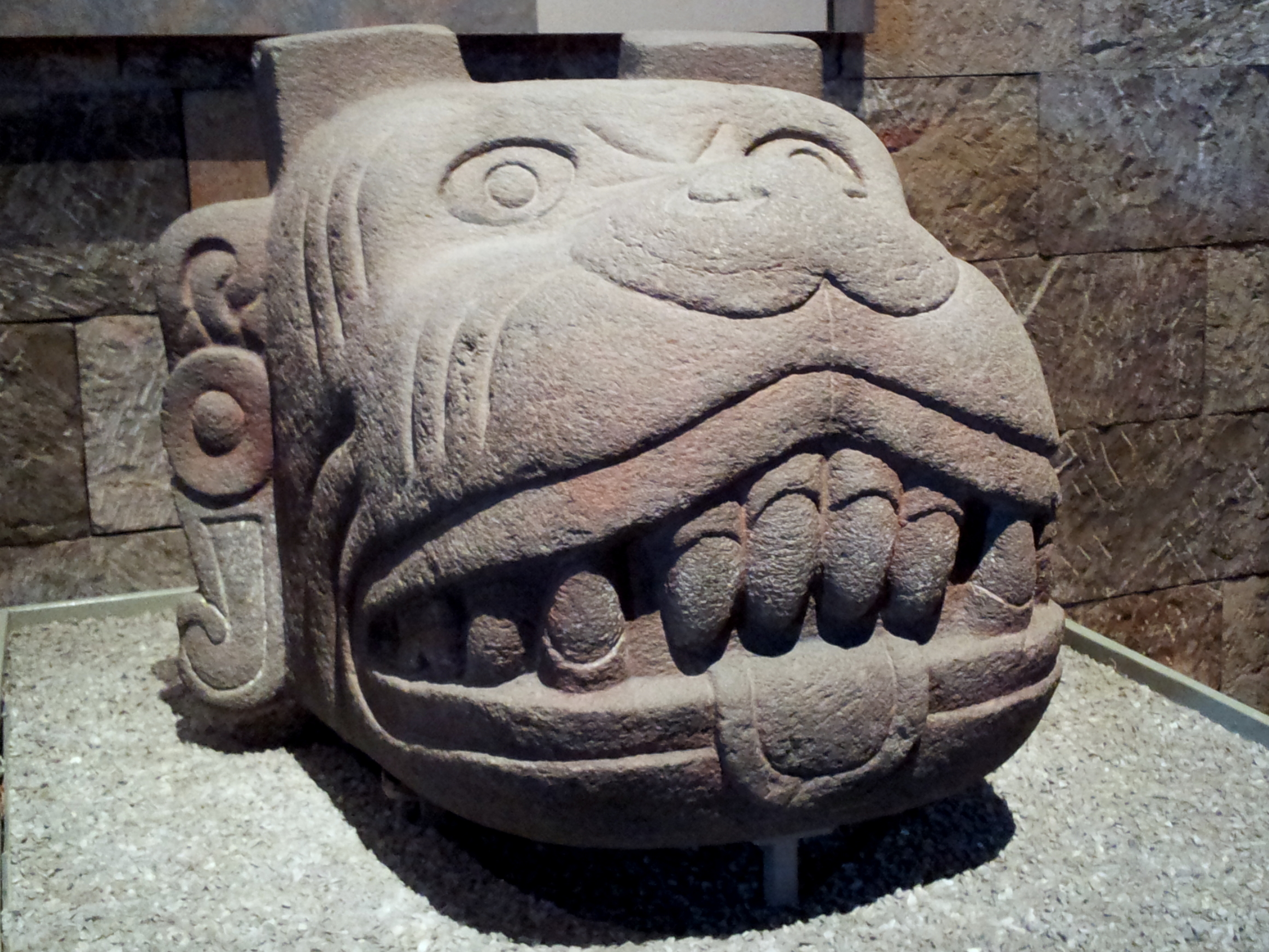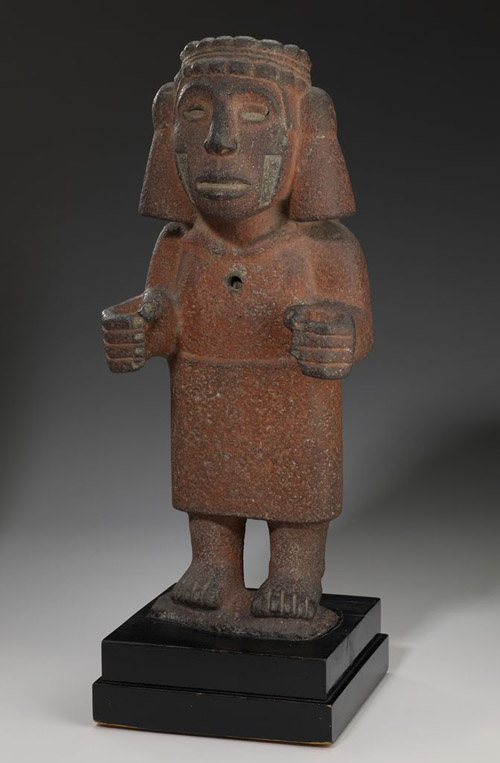|
Trecena
A trecena is a 13-day period used in pre-Columbian Mesoamerican calendars. The 260-day calendar (the '' tonalpohualli'') was divided into 20 trecenas. Trecena is derived from the Spanish chroniclers and translates to "a group of thirteen" in the same way that a dozen (or in Spanish ''docena'') relates to the number twelve. It is associated with the Aztecs, but is called different names in the calendars of the Maya, Zapotec, Mixtec, and others of the region. Many surviving Mesoamerican codices, such as Codex Borbonicus, are divinatory calendars, based on the 260-day year, with each page representing one trecena. See also * Aztec calendar * Maya calendar The Maya calendar is a system of calendars used in pre-Columbian Mesoamerica and in many modern communities in the Guatemalan highlands, Veracruz, Oaxaca and Chiapas, Mexico. The essentials of the Maya calendar are based upon a system which had ... * Tonalpohualli * K'atun Mesoamerican calendars {{Mesoamerica-stu ... [...More Info...] [...Related Items...] OR: [Wikipedia] [Google] [Baidu] |
Mesoamerican Calendars
Mesoamerican calendars are the calendrical systems devised and used by the pre-Columbian cultures of Mesoamerica. Besides keeping time, Mesoamerican calendars were also used in religious observances and social rituals, such as for divination. The existence of Mesoamerican calendars is known as early as ca. 500 BCE, with the essentials already appearing fully defined and functional. These calendars are still used in the Guatemalan highlands, Veracruz, Oaxaca and Chiapas, Mexico. The importance of aboriginal calendars in ritual and other aspects of Mesoamerican life was noted by many missionary priests, travelers, and colonial administrators, and later by ethnographers who described and recorded the cultures of contemporary Mesoamerican ethnic groups. Types of calendars Among the various calendar systems in use, two were particularly central and widespread across Mesoamerica. Common to all recorded Mesoamerican cultures, and the most important, was the 260-day calendar, a ritual ... [...More Info...] [...Related Items...] OR: [Wikipedia] [Google] [Baidu] |
Codex Borbonicus
The Codex Borbonicus is an Aztec codex written by Aztec priests shortly before or after the Spanish conquest of the Aztec Empire. It is named after the Palais Bourbon in France and kept at the Bibliothèque de l'Assemblée Nationale in Paris. The codex is an outstanding example of how Aztec manuscript painting is crucial for the understanding of Mexica calendric constructions, deities, and ritual actions.Keber, Eloise Quiñones. "Borbonicus, Codex." In Davíd Carrasco (ed). .html" ;"title="ol 1">The Oxford Encyclopedia of Mesoamerican Cultures [vol 1/nowiki>">ol 1">The Oxford Encyclopedia of Mesoamerican Cultures [vol 1/nowiki>' . : Oxford University Press, 2001 History The Codex Borbonicus is one of a very few Aztec codices that survived the colonial Spanish inquisition. When the Spanish conquistadors (lead by Hernán Cortés) entered Aztec cities, they would often find libraries filled with thousands of native works. However, most of the works were destroyed during the con ... [...More Info...] [...Related Items...] OR: [Wikipedia] [Google] [Baidu] |
Itztapaltotec
In Aztec religion, Itztapaltotec (sometimes spelled Iztapaltotec) is an aspect of the fertility god Xipe Totec. In the Aztec calendar, he is one of the patrons of the trecena beginning with the day One Rabbit (''ce tochtli'' in Nahuatl), alongside Xiuhtecuhtli, the god of fire. Xipe Totec proper is the patron of the trecena beginning with the day One Dog (''ce itzcuintli''). Itztapaltotec is an obscure figure, known only from ''tonalamatl'' (calendars). Brief, confusing information about him is given in two related manuscripts, the Codex Telleriano-Remensis and the Codex Ríos (or Codex Vaticanus A). Itztapaltotec is probably related to Itztli, another figure of the Aztec calendar also depicted as a personified knife. __NOTOC__ Gallery Image:Itztapaltotec_borgia.jpg, Image:Itztapaltotec_vaticanus_b.jpg, Image:Itztapaltotec_tonalamatl_aubin.jpg, Image:Itztapaltotec_borbonicus.jpg, Image:Itztapaltotec_telleriano_remensis.jpg, Image:Itztapaltotec_rios.jpg, See also * Itztli ... [...More Info...] [...Related Items...] OR: [Wikipedia] [Google] [Baidu] |
Xolotl
In Aztec mythology, Xolotl () was a god of fire and lightning. He was commonly depicted as a dog-headed man and was a soul-guide for the dead. He was also god of twins, monsters, misfortune, sickness, and deformities. Xolotl is the canine brother and twin of Quetzalcoatl, the pair being sons of the virgin Chimalma. He is the dark personification of Venus, the evening star, and was associated with heavenly fire. The Axolotl is named after him. Myths and functions Xolotl was the sinister god of monstrosities who wears the spirally-twisted wind jewel and the ear ornaments of Quetzalcoatl. His job was to protect the sun from the dangers of the underworld. As a double of Quetzalcoatl, he carries his conch-like ehecailacacozcatl or wind jewel. Xolotl accompanied Quetzalcoatl to Mictlan, the land of the dead, or the underworld, to retrieve the bones from those who inhabited the previous world (Nahui Atl) to create new life for the present world, Nahui Ollin, the sun of movement ... [...More Info...] [...Related Items...] OR: [Wikipedia] [Google] [Baidu] |
Chalchiuhtlicue
Chalchiuhtlicue (from ''chālchihuitl'' "jade" and ''cuēitl'' "skirt") (also spelled Chalciuhtlicue, Chalchiuhcueye, or Chalcihuitlicue) ("She of the Jade Skirt") is an Aztec deity of water, rivers, seas, streams, storms, and baptism. Chalchiuhtlicue is associated with fertility, and she is the patroness of childbirth. Chalchiuhtlicue was highly revered in Aztec culture at the time of the Spanish conquest, and she was an important deity figure in the Postclassic Aztec realm of central Mexico. Chalchiuhtlicue belongs to a larger group of Aztec rain gods, and she is closely related to another Aztec water god called Chalchiuhtlatonal. Religious significance Chalchiuitlicue directly translates to "Jade her skirt"; however, her name is most commonly interpreted as "she of the jade skirt." She was also known as Chalchiuhtlatonac (chalchihu tltla-tona-c) "She who shines like jade" and Matlalcueye "Possessor of the Blue Skirt" by the Tlaxcalans, an indigenous group who inhabited the ... [...More Info...] [...Related Items...] OR: [Wikipedia] [Google] [Baidu] |
Chantico
In Aztec religion, Chantico ("she who dwells in the house") is the deity reigning over the fires in the family hearth. She broke a fast by eating paprika with roasted fish, and was turned into a dog by Tonacatecuhtli as punishment. She was associated with the town of Xochimilco, stonecutters, as well as warriorship. Chantico was described in various Pre-Columbian and colonial codices. Naming variations Texts from the informants of Bernardino de Sahagún affirm Chantico's name to mean "she who dwells in the house" or "she who comes to make the house." Chantico is also said to also have been called ''Quaxolotl'' ("Two Headed")'','' since the male Aztec deity reigning over fire is named ''Xolotl''. Chantico was also nicknamed ''Chiconaui'' Alternate spellings of Chantico include Cantico. Chantico was also known by her calendric name, ''Chicunaui itzcuintli'' (Nine Dog). According to interpreter Pedro de Rios, Chantico was also known as "Lady of the Capsicum-Pepper" and "yellow w ... [...More Info...] [...Related Items...] OR: [Wikipedia] [Google] [Baidu] |
Chalchiuhtotolin
In Aztec mythology, Chalchiuhtotolin (; Nahuatl for "Jade Turkey") was a god of disease and plague. Chalchihuihtotolin, the Jewelled Fowl, Tezcatlipoca's nahual. Chalchihuihtotolin is a symbol of powerful sorcery. Tezcatlipoca can tempt humans into self-destruction, but when he takes his turkey form he can also cleanse them of contamination, absolve them of guilt, and overcome their fate. In the tonalpohualli, Chalchihuihtotolin rules over day Tecpatl (Stone Knife) and over trecena 1-Atl (Water). The preceding thirteen days are ruled over by Xolotl. Chalchihuihtotolin has a particularly evil side to him. Even though he is shown with the customary green feathers, most codices show him bent over and with black/white eyes, which is a sign reserved for evil gods such as Tezcatlipoca, Mictlantecuhtli, and Xolotl. Another depiction of Chalchiuhtotolin's evil side includes the sharp silver of his talons. His nahual In Mesoamerican folk religion, a nagual (pronounced a'wal is a h ... [...More Info...] [...Related Items...] OR: [Wikipedia] [Google] [Baidu] |
Xiuhtecuhtli
In Aztec mythology, Xiuhtecuhtli ("Turquoise Lord" or "Lord of Fire"), was the god of fire, day and heat. In historical sources he is called by many names, which reflect his varied aspects and dwellings in the three parts of the cosmos. He was the lord of volcanoes, the personification of life after death, warmth in cold (fire), light in darkness and food during famine. He was also named Cuezaltzin ("flame") and Ixcozauhqui , and is sometimes considered to be the same as Huehueteotl ("Old God"), although Xiuhtecuhtli is usually shown as a young deity.Matos Moctezuma & Solis Olguín 2002, p.476. His wife was Chalchiuhtlicue. Xiuhtecuhtli is sometimes considered to be a manifestation of Ometecuhtli, the Lord of Duality, and according to the Florentine Codex Xiuhtecuhtli was considered to be the father of the Gods, who dwelled in the turquoise enclosure in the center of earth.Matos Moctezuma 1988, p.94. Xiuhtecuhtli-Huehueteotl was one of the oldest and most revered of the indigeno ... [...More Info...] [...Related Items...] OR: [Wikipedia] [Google] [Baidu] |
Patecatl
In Aztec mythology, Patecatl is a god of healing and fertility and the discoverer of peyote as well as the "lord of the root of pulque". With Mayahuel, he was the father of the Centzon Totochtin. In the Aztec calendar, Patecatl is the lord of the thirteen days from 1 Monkey to 13 House. The preceding thirteen days are ruled over by Mictlantecuhtli and the following thirteen by Itztlacoliuhqui In Aztec mythology, Itztlacoliuhqui is the god of frost. He also represents matter in its lifeless state. The Nahuatl name ''Itztlacoliuhqui'' is usually translated into English as "curved obsidian blade". J. Richard Andrews contends that this i .... References Aztec gods Aztec pulque gods Fertility gods Health gods Alcohol deities {{Mesoamerica-myth-stub ... [...More Info...] [...Related Items...] OR: [Wikipedia] [Google] [Baidu] |
Itztlacoliuhqui
In Aztec mythology, Itztlacoliuhqui is the god of frost. He also represents matter in its lifeless state. The Nahuatl name ''Itztlacoliuhqui'' is usually translated into English as "curved obsidian blade". J. Richard Andrews contends that this is a mistranslation and that the correct interpretation is "everything has become bent by means of coldness" or "plant-killer-frost". In the Aztec calendar, Itztlacoliuhqui is the lord of the thirteen days from 1 Lizard to 13 Vulture. The preceding thirteen days are ruled over by Patecatl and the following thirteen by Tlazolteotl. The creation of this god appeared in the Aztec myth of creation. Tonatiuh, the sun god, demanded obedience and sacrifice from the other gods before he will move. Enraged at his arrogance, the god of dawn and the planet Venus, Tlahuizcalpantecuhtli, shoots an arrow at the sun. However, the dart misses its mark and the sun throws his own back at the morning star, piercing the Lord of Dawn through the head. At t ... [...More Info...] [...Related Items...] OR: [Wikipedia] [Google] [Baidu] |
Codex Borbonicus, P11 Trecena13
The codex (plural codices ) was the historical ancestor of the modern book. Instead of being composed of sheets of paper, it used sheets of vellum, papyrus, or other materials. The term ''codex'' is often used for ancient manuscript books, with handwritten contents. A codex, much like the modern book, is bound by stacking the pages and securing one set of edges by a variety of methods over the centuries, yet in a form analogous to modern bookbinding. Modern books are divided into paperback or softback and those bound with stiff boards, called hardbacks. Elaborate historical bindings are called treasure bindings. At least in the Western world, the main alternative to the paged codex format for a long document was the continuous scroll, which was the dominant form of document in the ancient world. Some codices are continuously folded like a concertina, in particular the Maya codices and Aztec codices, which are actually long sheets of paper or animal skin folded into pages. The ... [...More Info...] [...Related Items...] OR: [Wikipedia] [Google] [Baidu] |




